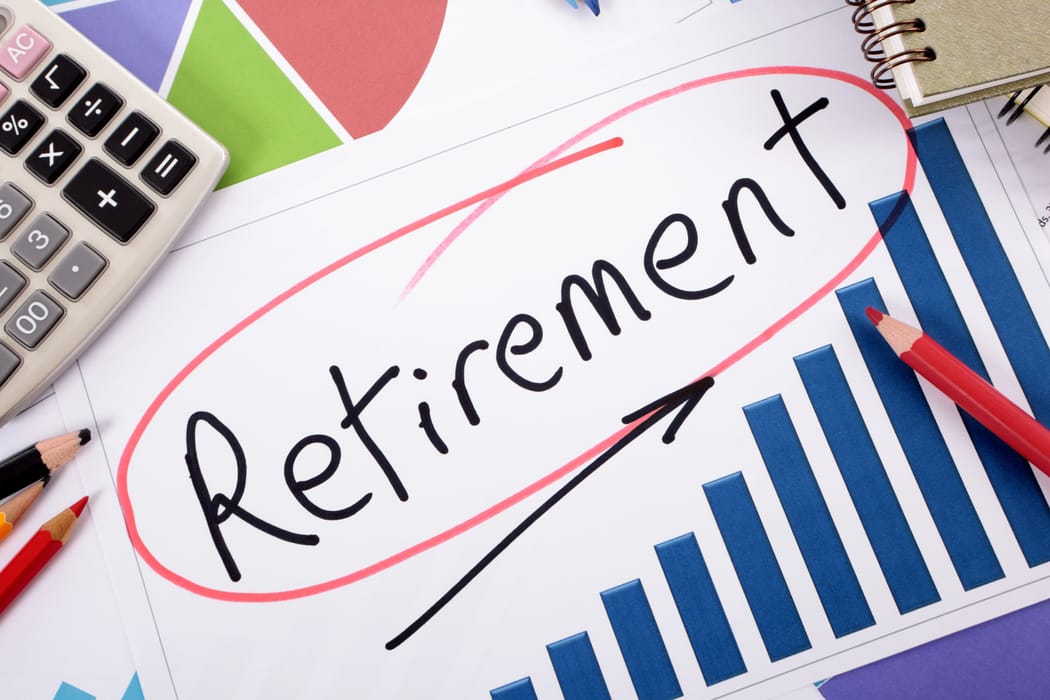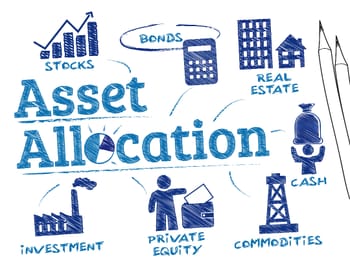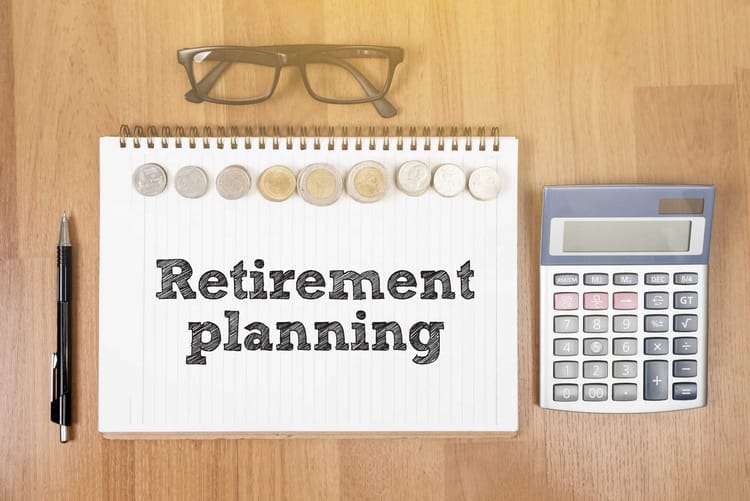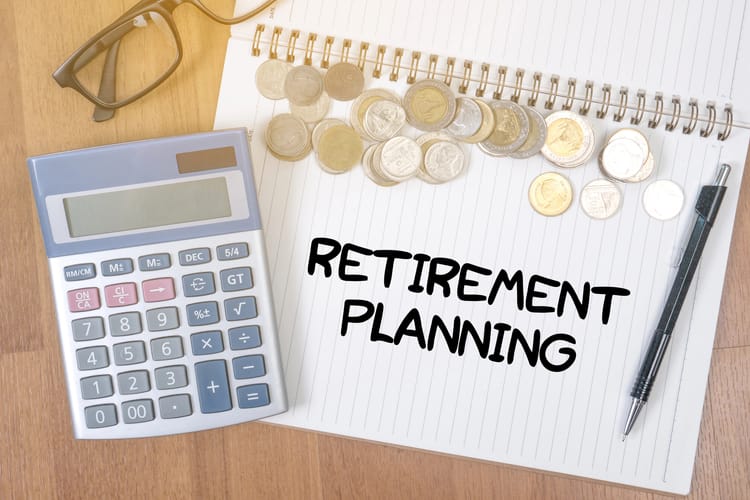How to make a retirement plan
Creating a retirement plan shows how you’ll pay for life after work. In most EU countries, public pensions won’t be enough. And closing that gap early makes a big difference. If you want to know how to start planning for retirement, begin with three simple questions:
- What will I get from the state or my employer?
- What will I spend each month?
- How will I cover the gap?
The answers shape your strategy. For some, it’s saving monthly. For others, it’s investing part of their income. Many use both. What matters is building a plan you can follow. Getting a retirement plan in place early gives you more room to adapt.
A typical personal retirement plan includes:
- National pension entitlements (based on your work history);
- Voluntary savings or private pension products;
- Additional income, like rent or part-time work.
Your plan should be practical and realistic. You don’t need complex forecasts. You need action and regular checks.
Start with your goals
Every retirement plan begins with a goal. Without it, saving loses focus. To make a retirement plan, start with your expected lifestyle. Will you keep current habits, downsize, or travel more? Your lifestyle plans will shape your future budget. Your monthly budget will depend on your choices. Modest living in the countryside means lower costs, while frequent travel or big-city life requires more. Then, consider other needs: support your spouse and family, healthcare reserves, or leaving an inheritance. These factors shape how much you need and how you’ll structure your plan.
Finally, think about other goals. Do you want to leave money to your family? Keep a cash reserve for medical costs? Each goal affects savings and investments.
Once you’ve defined your retirement goal, you’ll need tools to get there. These might include:
- public or employer-based pensions;
- personal savings or investment accounts;
- long-term products like PEPP (Pan-European Personal Pension — a regulated savings fund) or private plans;
- flexible solutions for side investments.
You’ll explore these later in the guide. For now, just know: setting up a retirement plan usually means combining several options that fit your timeline, income, and risk level.
Know your time horizon: from saving years to retirement duration
Creating a retirement plan starts with time. First, define your saving period. You need to know how long you’ll be contributing before you retire. This shapes your strategy.
If you're in your 20s or 30s, you have 30-40 years to build your pension capital. That allows more risk. You can invest in growth. Even €150 a month can grow into over €150,000 in 35 years if invested smartly. But remember: that’s before inflation, so returns must outpace rising prices.
Start a retirement plan later, say, at 50, and you may only have 15-17 years to save. That means investing less in stocks and more in stable options like cash and bonds, plus contributing more each month.
Next, estimate how long your retirement could last. Life expectancy in most EU countries ranges from 81 to 85. In many EU countries, the standard retirement age is between 65 and 67. That means your savings should last 20-25 years. Or longer if you retire early.
Think ahead. Personal retirement plans don’t stop at retirement. Retiring at 60 means five extra years to fund. That’s less time to save and more years to cover. Your health, gender, family history, or part-time work all matter. You can’t predict how long you’ll live, but assuming 25 years after retirement is a practical place to start.
Determine retirement spending needs
Estimate how much money you'll spend each month after retirement. To learn how to start a retirement plan, assess your current expenses and then adjust based on your future lifestyle.
Let’s say you own your home and stop working at 65. You’ll save on commuting and daily meals out, but your travel budget or medical bills may grow. If you rent, live abroad, or support adult children, your spending may rise instead.
A basic rule: plan for 70-80% of your pre-retirement income. If you earn €2,500 per month now, you may need €1,800-2,000 in retirement. Adjust for inflation. If retirement is 20 years away, it can raise that number significantly.
Build two versions of your monthly or annual budget:
- Minimum needs. Housing, food, healthcare, essentials.
- Desired lifestyle. Extras like travel, hobbies, or gifts.
For example, if you own your home and live simply, you might spend around €1,200/month:
- Rent or maintenance: €400
- Food and household: €350
- Healthcare and insurance: €150
- Utilities, transport, phone: €300
If you want more freedom, the desired lifestyle may raise this to €2,000/month:
- All of the above
- Plus travel: €300
- Dining, hobbies, gifts: €250
- Buffer for inflation and unforeseen costs: €250
These aren’t fixed numbers. Use your current spending as a base, then adjust for changes in lifestyle, location, or health after retirement. The difference between the two budgets shows where you can cut back if needed or where to invest more if your savings allow.
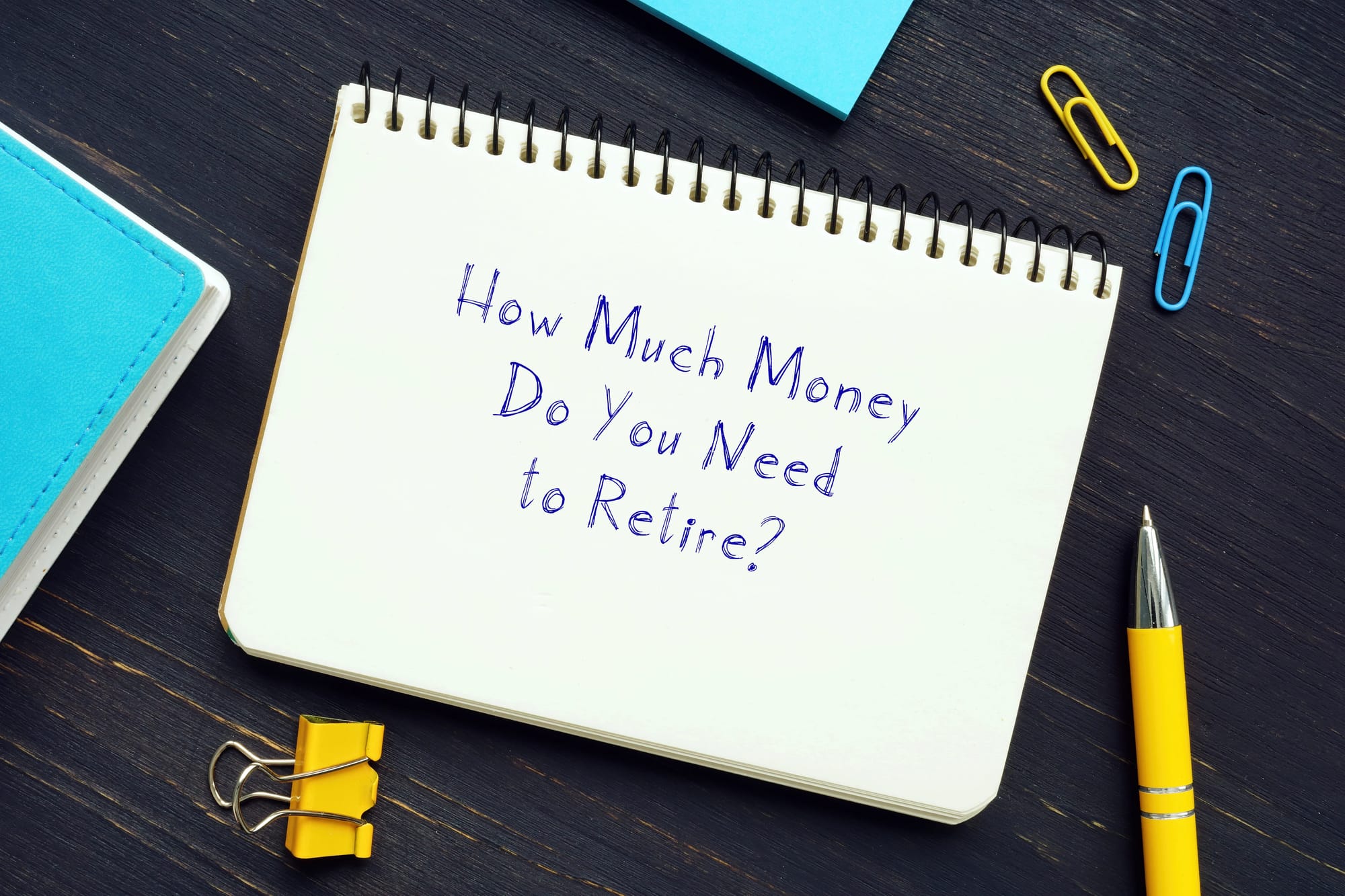
How much do you need to save per month for retirement?
To calculate how much to save, start with your target income and work backwards.
- Define your monthly retirement needs. Consider minimum and ideal scenarios. You might get by on €1,200/month, but prefer €2,000/month to maintain comfort and flexibility.
- Subtract predictable income. Add up what you expect from state and employer pensions. Include other stable sources like rent, annuities, or dividends. Example: You want €2,000/month and expect €1,200 from pensions. That leaves an €800/month gap.
- Estimate the total amount needed. Multiply the monthly gap by the number of years you’ll spend in retirement. For 25 years, €800/month = €240,000. That’s how much capital you’ll need to cover the difference. You can also calculate a minimum target and a desired one, then choose what’s realistic.
- Determine monthly savings. If you’re 20 years from retirement and aim for €240,000, you’ll need to save about €500/month assuming moderate returns. Start earlier, and that amount shrinks. Begin saving at 30 instead of 45, and you could need just €250/month for the same goal.
As a general rule, saving 10-15% of your gross income is a good baseline. This includes employer pension contributions. Adjust upwards if you start later or have higher lifestyle goals.
Note: This estimate assumes no returns during retirement, which is a conservative approach.
Most pension funds and banks offer free calculators to help you estimate future income. For example, the European Commission provides a pension calculator, while private providers like Vanguard, Aviva, and ING offer tools tailored to national systems. These calculators typically allow you to input your current savings, age, expected retirement age, and desired income level.
See where you stand
Before adjusting anything, check your current position. Look at what you already have and what you’re on track to receive.
First, check the official data. Most EU countries let you request a pension statement. It shows your work years, estimated state benefits, and any employer plans. If you’ve worked in more than one EU country, coordination rules ensure your contributions count across borders.
Next, list all your personal savings. Include retirement accounts, investments, cash savings, and other assets. Be realistic. Exclude anything you don’t plan to use for retirement. Open a spreadsheet or grab a notepad. Write down each account, balance, and whether it’s meant for retirement or not.
Then, compare what you’ll likely have with what you need. Let’s say your retirement target is €2,000/month for 25 years — €600,000 in total. You expect €1,200/month from state and employer pensions — that covers €360,000. You’ve saved €40,000 in personal accounts so far. The remaining gap: €200,000. That’s what you’ll need to save over the years you have left.
If the gap is small, keep going. If it’s large, review your options:
- Increase your monthly savings;
- Adjust your retirement age;
- Reduce expected expenses;
- Consider part-time work later in life.
Understanding how to plan for retirement also means knowing how to fix these gaps early. This isn’t a one-time check. Update it when life shifts — new income, new goals, new conditions.

Decide how you’ll save and invest
Once you know your savings target, the next step is to choose how you’ll reach it. There’s no single answer. Most people combine different tools based on income, risk tolerance, and timeline. Let’s look at the most common options, from structured plans to flexible tools.
Use a private retirement plan
Many EU countries offer personal retirement planning options with tax benefits. These include insurance-based pensions, employer-matched plans, and the pan-European personal pension (PEPP). They’re built for regular contributions but usually come with strict withdrawal rules. These plans often lock your capital until retirement age.
This option suits those who want a structured system with long-term incentives. It requires less involvement but also less flexibility.
Invest independently for more control
If you can handle seeing your investments rise and fall without panic and don’t need the money soon, direct investing gives you more control.
You can build your own portfolio using platforms like DEGIRO or Trade Republic, both offering low-cost access to ETFs, stocks, and bonds. Interactive Brokers is another option for those seeking wider market access. Some savers prefer N26 or Revolut for basic investment tools linked to their bank accounts. Others turn to Raisin, a marketplace for high-yield savings accounts across EU banks. For a hands-off option, robo-advisors like Finax, Scalable Capital, or N26 Invest can automatically manage your investments based on your retirement timeline and risk profile.
The trade-off is clear: more responsibility, more upside, more risk.
Consider flexible investment platforms
If you’re looking for a higher return than traditional pensions can offer, Quanloop might be a useful part of your plan. We’re not a pension provider, but we can complement your setup. Quanloop is a stable-income investment fund with a higher risk/return ratio. You invest small amounts, and we automatically reallocate your capital based on the risk level you select. Your funds are reinvested daily, and you can withdraw any time, without penalties.
For those seeking a low-maintenance but active approach, this means flexibility, liquidity, and control — all with less effort. While we’re not here to replace your pension, Quanloop can strengthen your overall retirement strategy.
Mix and adjust
You don’t have to pick just one method. You can combine a private retirement plan with personal investments and add a flexible tool like Quanloop to balance things out. At Quanloop, we help you invest consistently, even with small amounts. Even €100 a month, regularly invested, can help cover a €500/month pension gap over time, especially if you start early. What matters most is staying consistent.
Whatever you choose, make it automatic. Treat your retirement savings like a fixed cost. Building a retirement plan you can follow long-term is more important than picking the “best” product. And always check how pension products or investments are taxed in your country.
Make a retirement plan and update it regularly
Once you know what you want and how you’ll get there, make it concrete. List what you’ll do, how often, and with which providers. Your written plan can be simple. Include these five points in a document or personal finance app:
- Your estimated retirement age and time horizon;
- Expected income from public and occupational pensions;
- Monthly contribution target;
- Chosen savings and investment tools (e.g., PEPP, Quanloop, ETF portfolio);
- Annual review schedule.
Write it down. Keep it somewhere you’ll revisit at least once a year. Setting up a retirement plan isn’t a one-time task; it’s something you build, track, and adjust as your life evolves.
Keep checking in. Your life changes. So should your plan. If your situation shifts, update the plan. For example, if inflation rises sharply or you change jobs, check whether your savings rate still fits.
Conclusion
Setting up a retirement plan is about making steady progress. Start with your goals. Estimate how much income you’ll need and how long it should last. Then choose a mix of options. You can use public pension, private plans, or flexible investments that fit your timeline and risk profile.
Think of this guide as a roadmap, not a checklist. You won’t fix everything in one go. But you can start with €50-100 a month and get the desired results. Consistency and automation are crucial. Use tools such as auto-transfer to a savings or pension account.
You’ll need a plan you can follow. Even a basic one puts you far ahead of those who never start. Learning how to plan for retirement is not about precision; it’s about building a system you’ll actually use. The key is to act — not later, now.
Frequently Asked Questions
Why is planning for retirement early so important, especially in the EU?
Planning early for retirement is essential because public pensions in most EU countries rarely cover your full post-work expenses. The earlier you start saving or investing, the more time your money has to grow — even modest monthly contributions can accumulate significantly over decades. Starting young also allows for more flexibility and risk-taking in your investments. A personal retirement plan helps close the income gap between what the state provides and what you actually need, allowing you to maintain your desired lifestyle throughout retirement.
How can I calculate how much I need to save for retirement each month?
To calculate monthly retirement savings, begin with your target retirement income and subtract expected state or employer pensions. For instance, if you aim for €2,000 per month and expect €1,200 from public pensions, you’ll need to fund €800 yourself. Over 25 years, that’s €240,000. With 20 years to save, and assuming moderate returns, this means putting aside roughly €500 per month. A common rule is to save 10–15% of your gross monthly income. Free pension calculators from banks or pension funds can help refine your estimate, accounting for inflation and investment growth.
What are the best ways to save and invest for retirement in the EU?
There’s no one-size-fits-all approach — most people use a mix of savings tools based on their income, goals, and risk tolerance. Private retirement plans (such as PEPP or insurance-based pensions) offer tax benefits but often limit access to funds until retirement. Independent investing via platforms like DEGIRO or robo-advisors like Finax allows more control and growth potential but comes with risk. Flexible platforms like Quanloop offer daily liquidity and automatic reinvestment based on your risk profile. The key is to be consistent: even €100 per month, steadily invested, can help close future pension gaps. Always check how products are taxed in your country.
List of References
- Source: employment-social-affairs.ec.europa.eu
- Source: oecd.org
- Source: pepp.eiopa.europa.eu
- Source: ec.europa.eu

